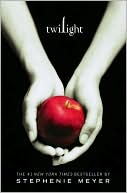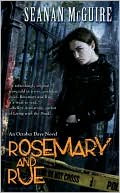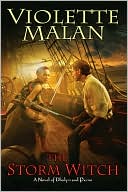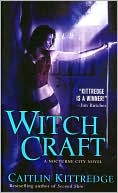I wrote this piece two years ago, but wanted to get it reposted to the new WordPress site, especially after reading a few of the comments over at Genreville’s post on self-publishing.
I have absolutely nothing against self-publishing.
Let me say that again. I don’t hate self-publishing. I don’t hate self-published authors. I’m not interested in keeping anyone down, bashing authors, or mocking people who have accomplished the difficult and impressive job of completing a novel.
I do have serious problems with scammers trying to talk would-be writers into shelling over hundreds or thousands of dollars, while completely deluding them as to what they’re getting into.
The sad thing is that most of these places recycle the same old lines about how “traditional” publishers refuse to accept new writers*, and then they start listing famous and bestselling authors like Grisham and Paolini who chose to self-publish instead of going with one of those New York monstrosities . . . the implication being that you too will be a NYT bestseller if you self-publish your novel!
I finally got annoyed enough to gather some of these claims together, starting with good old Grisham.
1. John Grisham self-published A TIME TO KILL. Actually, Grisham sold A TIME TO KILL to a small publisher, Wynwood Press, who did a 5000-copy print run. Grisham bought the remaindered copies, which he sold himself. While this is the sort of hard work self-publishing often involves, A TIME TO KILL was certainly not a self-published book.
2. Christopher Paolini self-published ERAGON. Paolini’s family ran a small commercial press. ERAGON was not the first book published by Paolini International. Paolini International was founded in 1997, and you could make a strong argument that they are a commercial publisher, albeit a small one. On the other hand, since they were publishing the work of their son, you could also call this self-publishing. In either case, Paolini’s success** relied heavily on the fact that his family had five years of experience running a publisher, and were willing to devote themselves full-time to promoting his book. Unless your family has the same experience and devotion to your book, I wouldn’t count on achieving this level of success.
3. Mark Twain self-published HUCKLEBERRY FINN. I love this one. Companies will loudly proclaim that publishing is changing, that “traditional publishers” are the dinosaurs of the book world, and that self-publishing and print-on-demand are the wave of the future. These same companies then cite examples well over a century old. HUCKLEBERRY FINN was published in the late 1800s. Given how much the publishing industry has changed, how about we confine our arguments to examples less than a hundred years old. M’kay?
4. James Redfield self-published THE CELESTINE PROPHECY. Actually, this one appears to be true. From everything I’ve researched, Redfield did indeed self-publish. He gave away about 1500 copies, and word-of-mouth helped from there. What, you thought I was only going to post the false myths? Self-publishing canlead to success. Not as often as scammers would have you believe, but anything’s possible. (For an example of a SF/F author who made it work, check out Simon Haynes.)
5. William Strunk, Jr. self-published THE ELEMENTS OF STYLE for his classes at Cornell University. Also true. However, it’s misleading. First of all, this book had a captive audience from day one. Unless you can force several hundred students to buy your book every semester, don’t count on seeing the same success. Also, there’s a huge difference between self-publishing non-fiction and fiction. With non-fiction, if you have a niche audience and you’re an expert on your topic, then you have a built-in platform through which to market your work. The success of Strunk and other non-fiction works is pretty much irrelevant to those of us who write fiction.
6. Even famous authors like Louis L’Amour self-published their work! L’Amour’s collection SMOKE FROM THIS ALTAR was published in 1939 by Lusk Publishing Company, which was owned by Enoch Lusk. I’ve been unable to find any other books from this publisher, so it may be self-publishing and not a small press publication. Regardless, what this claim usually omits is whatL’Amour self-published. The implication is that he’s another success story who went from humble self-publishing to bestselling author. In fact, SMOKE FROM THIS ALTAR is a collection of L’Amour’s poetry. Poetry, like non-fiction, is a very different beast than fiction. L’Amour’s first novel appeared in 1950, and he never self-published his fiction.
7. What about L. Frank Baum? He self-published, right? L. Frank Baum wrote 14 Oz books, which were published between 1900 and 1920. (So I suppose you could say this example is less than 100 years old. But you’re cutting it close!) THE WONDERFUL WIZARD OF OZ was the first book, and was published by the George M. Hill Company in 1900. Hill also published at least one of Baum’s earlier books. George M. Hill went out of business in 1902, after which Reilly & Britton published Baum’s Oz books. The final two Oz books (by Baum) were published by Reilly & Lee. But this myth isn’t completely false. My research suggests that Baum did indeed self-publish one work . . . a manual on chicken farming.
I could go on at length, but this could easily become a novel-length work if I had the time and energy. I have books of my own to write. And my goal isn’t to analyze every last myth, but rather to take a critical look at some of the most popular claims, in the hope of helping others do the same.
Publishing is hard work. It doesn’t matter which route you choose. Commercial publishing can be slow. Most authors who go this route face years of rejection and struggle. Self-publishing gives you more control. You can publish the very first book you ever write, if you’re so inclined. (I’d advise against it, but that’s just me.) On the other hand, the average self-published book sells very few copies, and requires much more marketing and self-promotion by the author. A commercially published book doesn’t make you an instant celebrity either, of course. Believe me, I wish it did. But the average book from Baen, DAW, or Tor will sell more copies in its first week than most self-published books sell in their lifetime.
There are no easy paths to success. Whatever you might think of THE CELESTINE PROPHECY, Redfield did an awful lot of work to sell his book and build word-of-mouth. Paolini went to hundreds of schools, in costume, promoting ERAGON. My books are published by DAW, but I still I spend way too much time designing and distributing promotional materials, not to mention traveling to conventions and libraries and anywhere else I can go. Being a writer is hard! (Anyone who says differently is selling something.)
Bottom line: know what your goals are. Do the research. There are plenty of scammers and snake oil salesmen*** in this field. Don’t fall for the sales pitch, and make an educated choice.
Good luck!
—
*Off the top of my head, here are a few new SF/F authors who sold books to major publishers in the past few years: Sarah Prineas, Tobias Buckell, Joshua Palmatier, Marie Brennan, Jay Lake, Matthew Cook, Anton Strout, Seanan McGuire, Stephanie Burgis, C. C. Finlay, and myself.
**Don’t get me wrong. I would love it if my books did half as well as ERAGON!
***The snake oil salesman analogy is borrowed from John Savage, who writes an excellent entry on self-publishing myths at http://scrivenerserror.blogspot.com:80/2004/08/autobibliophilia.html.
 book designed to demonstrate that Publish America would accept just about anything. Nor does PA pay much attention to things like cover art, as you can see in one of my old LOL books.
book designed to demonstrate that Publish America would accept just about anything. Nor does PA pay much attention to things like cover art, as you can see in one of my old LOL books.






 So I finished reading Twilight
So I finished reading Twilight 




